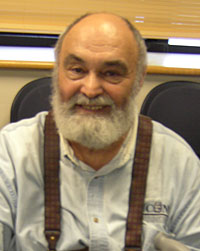Year: 2005
Corollaries of papers [1] and [2] are not only an electron model, but a proton model as well [3-5]. The proton is also a torus. Angular velocity amplitude of its equatorial rotation is 1836 times less than of electron. But angular velocity of its meridian rotation is 3765 times bigger. This last fact makes the situation in ether in the vicinity of the proton essentially other than in the case of electron. Local light velocity in the vicinity of electron is equal to light velocity c in free ether. But it is equal to sqrt2 c in the vicinity of the proton. It is evident that it must come to at a certain distance from proton. But this convergence turns out to be discrete and non monotonic. In other terms, the proton gives rise to a system of standing waves or curls in the surrounding ether. A local light velocity in this curls decrease to c/137 and then increase up to c making 137 steps. These 137 curls or force lines in Faraday terms differ from all the other in that their radius is greater and angular velocity is less than of electron. This means that electron can be inside these and only these curls. In particular this means that electron in unstirred hydrogen atom is in rest inside the first atomic force line with local light velocity c/137 . In multi-electronic atoms, electrons with non-zero orbital momentum move inside their maternal force line. But in order electron could move infinitely long it must move under conditions of superconductivity. It was shown in [6] that such electron must move with double local light velocity. When it is knocked out of its maternal force line it comes to new force line with less velocity than it is necessary for superconductive movement on this new line. It moves on the new line with friction. The accumulated energy is radiated and the electron comes back perhaps not on the very material but lower force line (force line with lower local light velocity).
References
- J.G. Klyushin, "On the Maxwell Approach to Gravity", Report in seminar of St. Petersburg Physical Society, St. Petersburg, Russia, 1995.
- J.G. Klyushin, "Electro - and Gravidynamics", 11th NPA Conference, Storrs, Connecticut, 2003.
- J.G. Klyushin, "Proton Construction: Experimental Approach", 12th NPA Conference, Denver, Colorado, 2004.
- J.G. Klyushin, "Hydrogen Atom Structure: Experimental Approach", 12th NPA Conference, Denver, Colorado, 2004.
- J.G. Klyushin, "A Field Generalization for the Lorentz Force Formula", Galilean Electrodynamics, 11, (5) 83 (2000).
- J.G. Klyushin, "Electron Dynamics in Ether", Galilean Electrodynamics, 13, Special Issues Number 2, GED-East, 37, Fall (2002).
- Additional information: http://www.physical-congress.spb.ru/.


